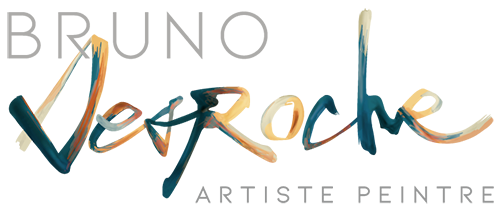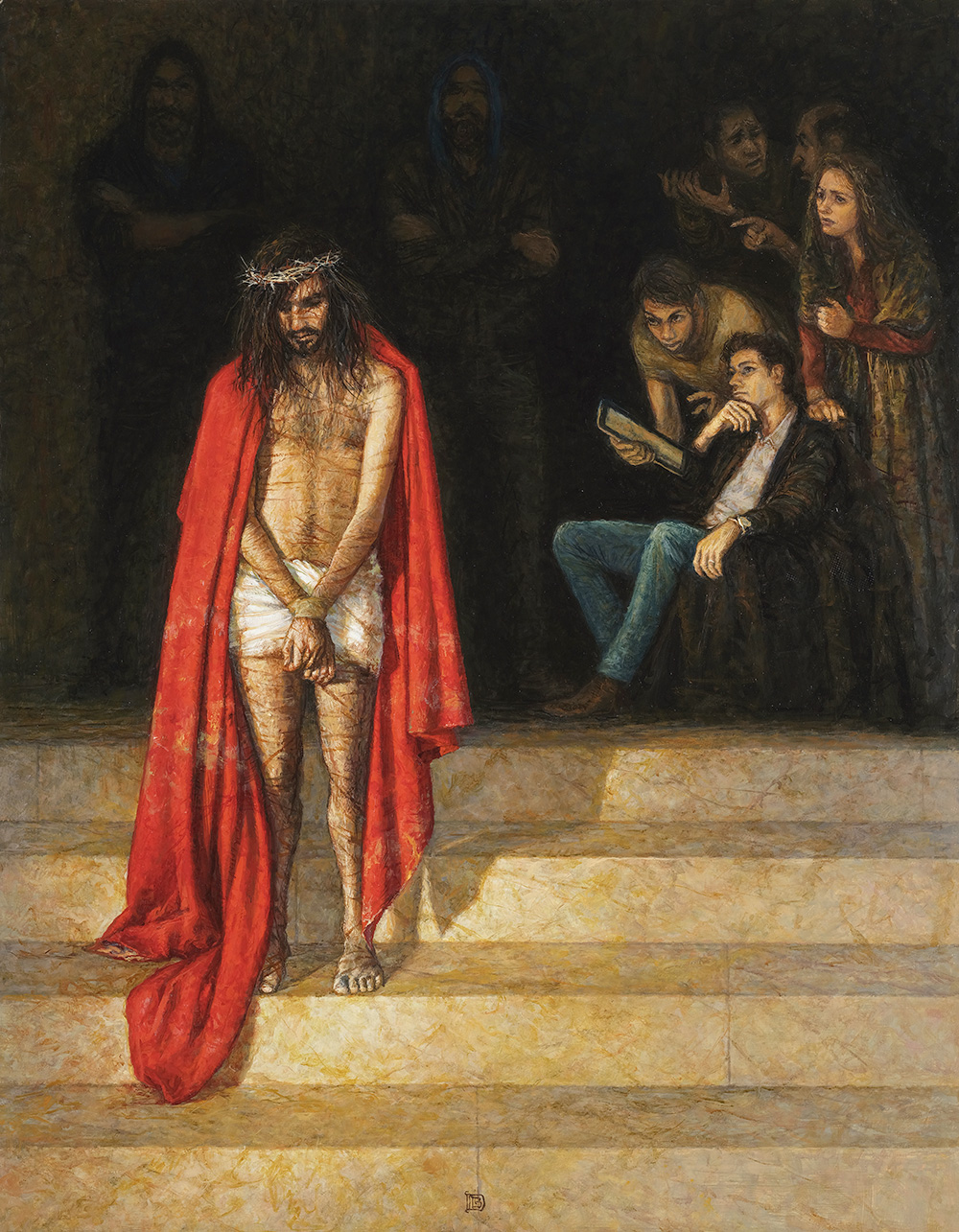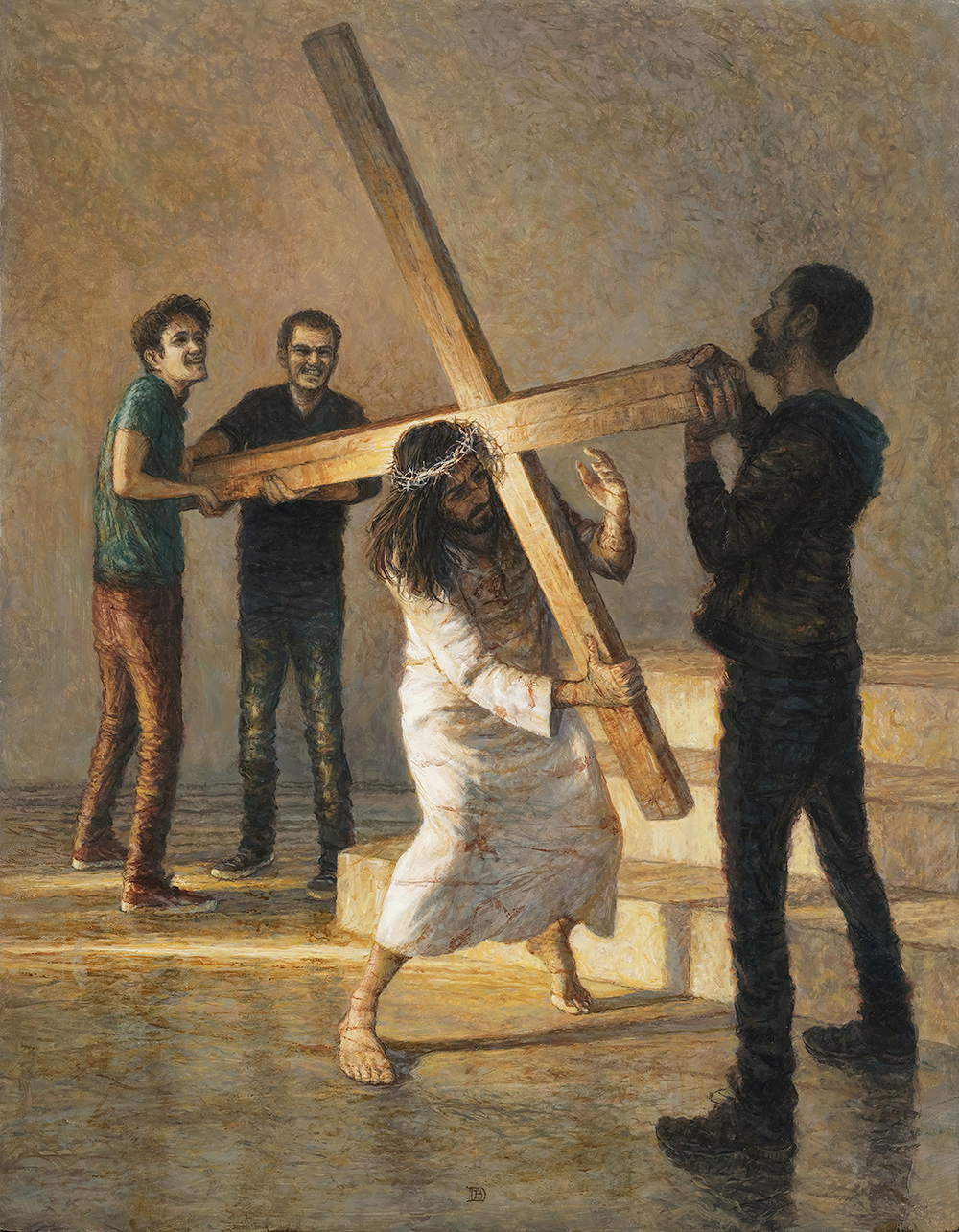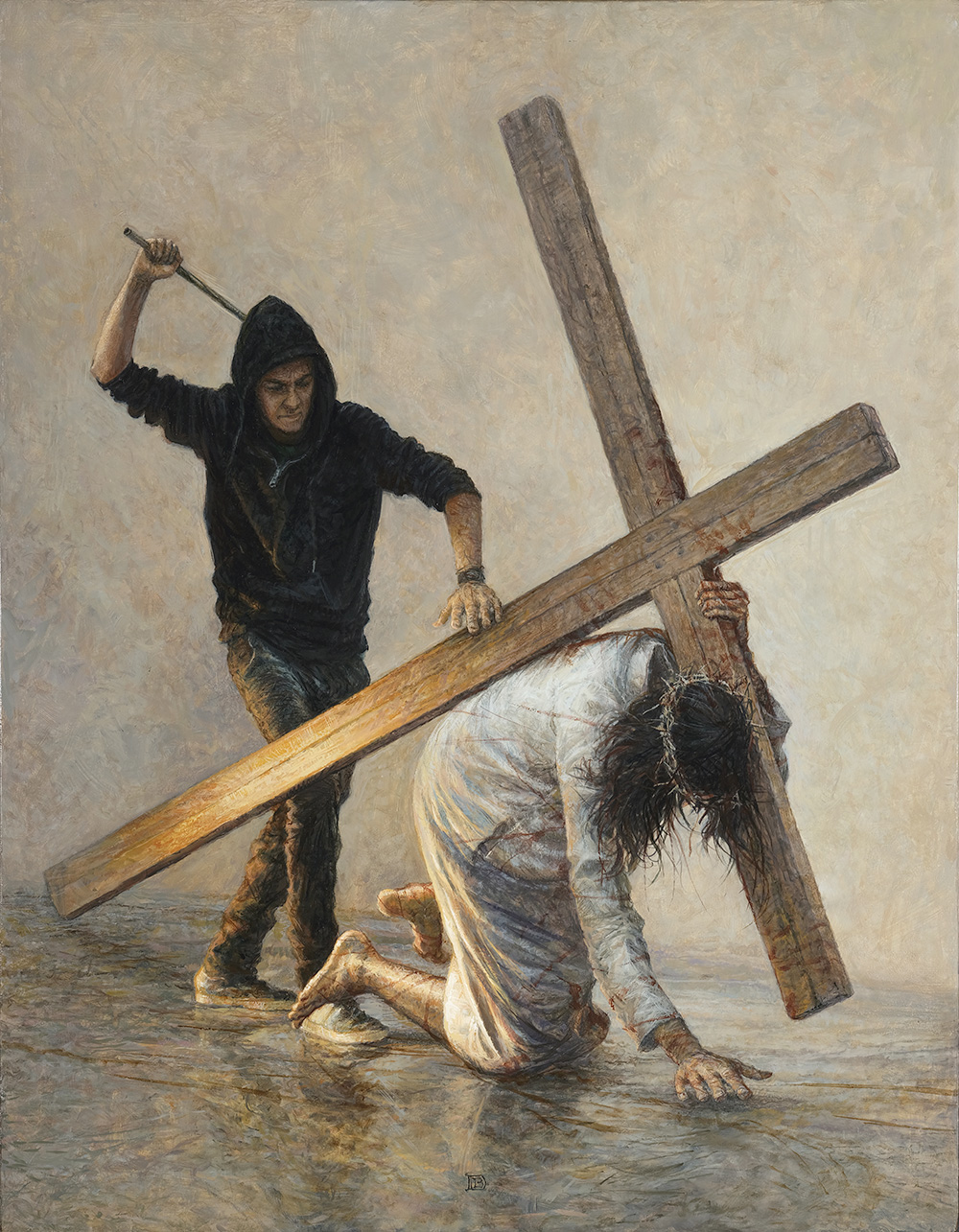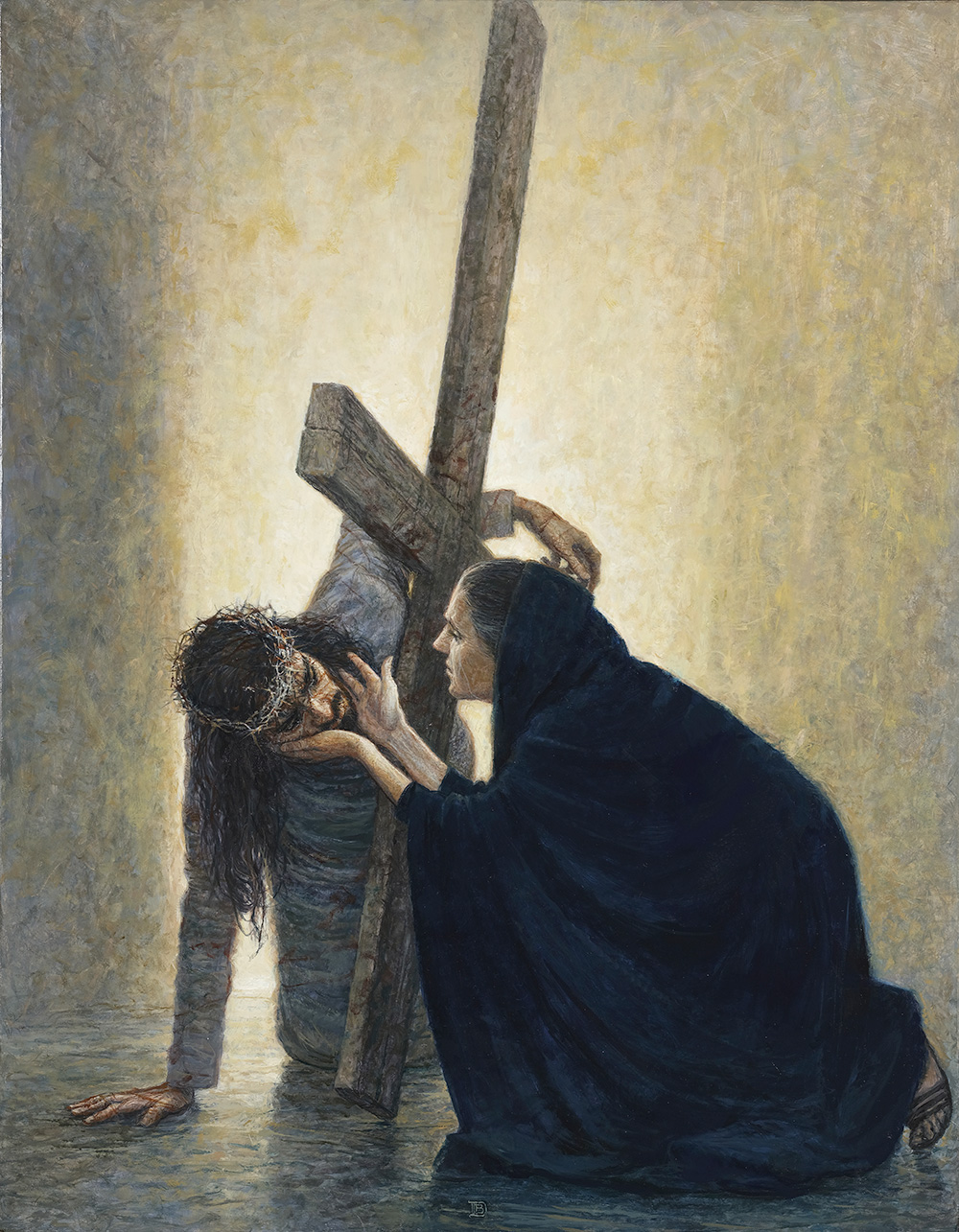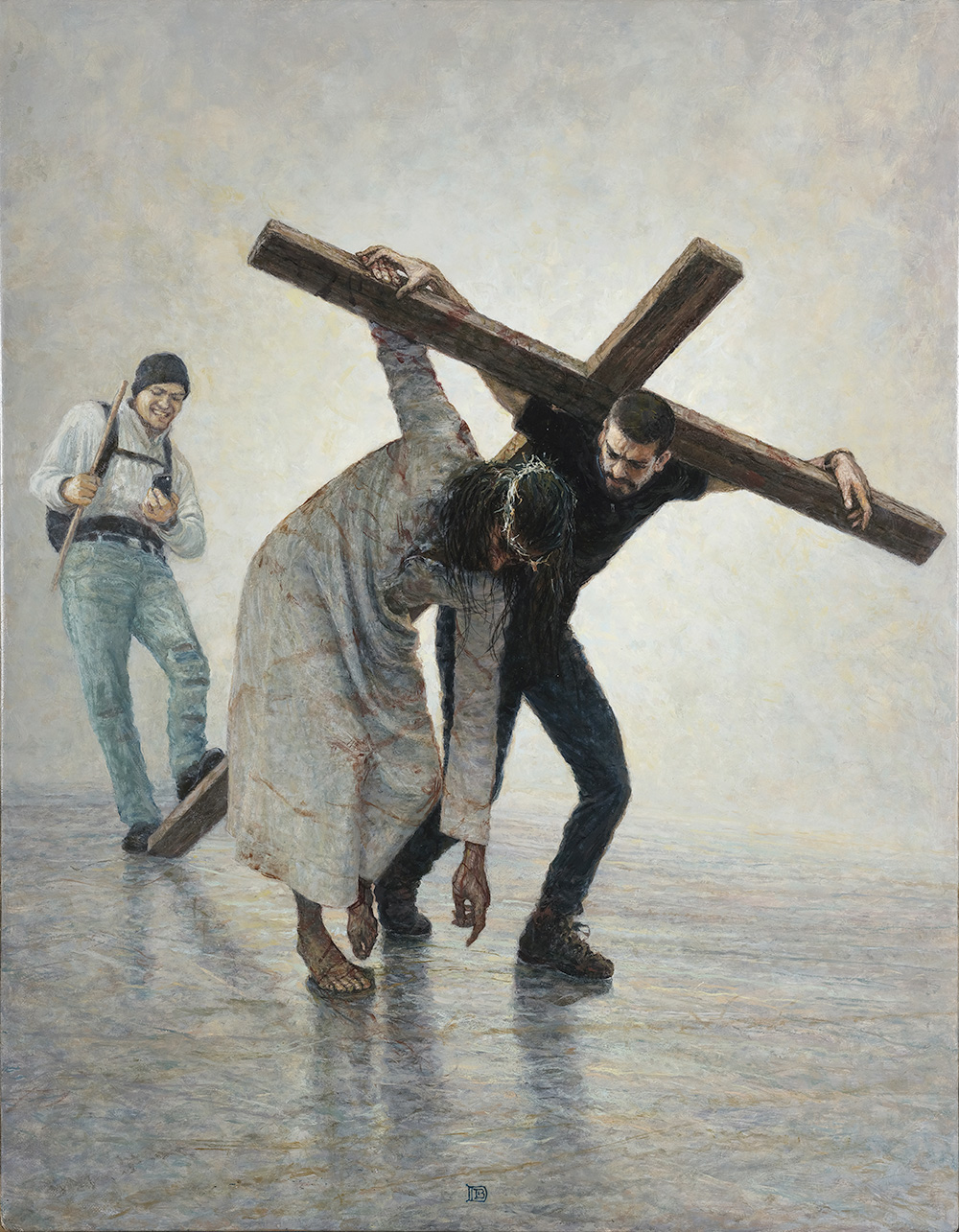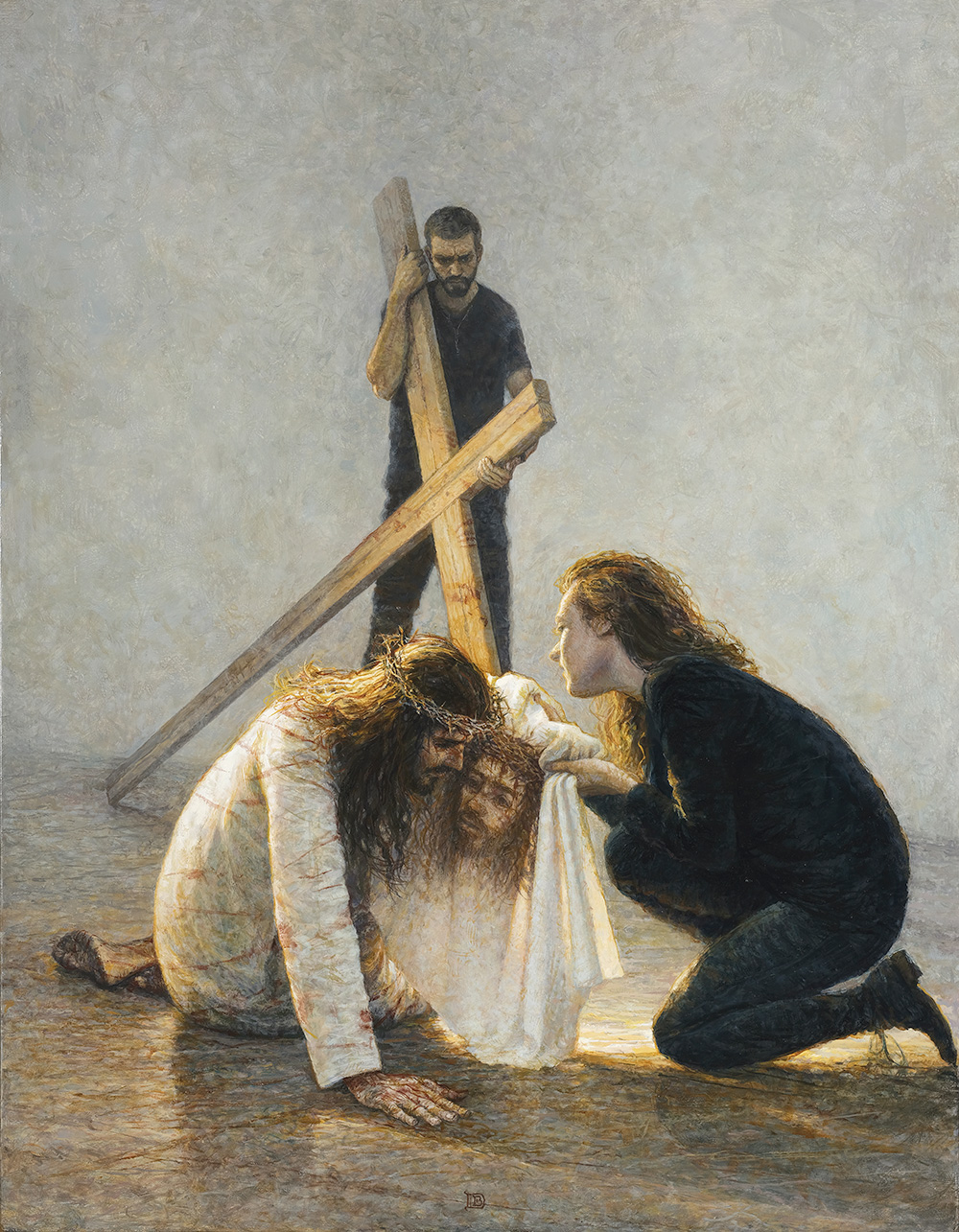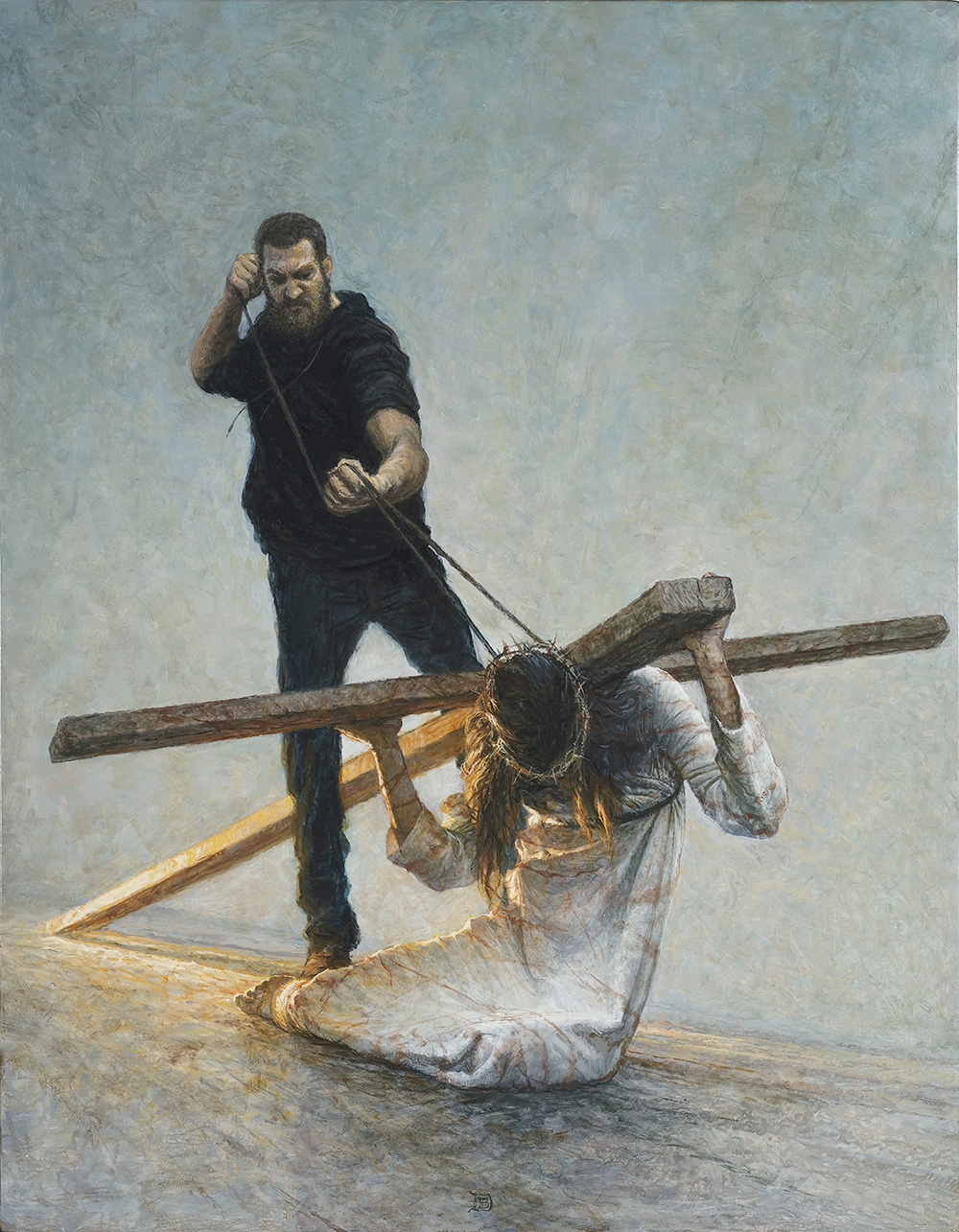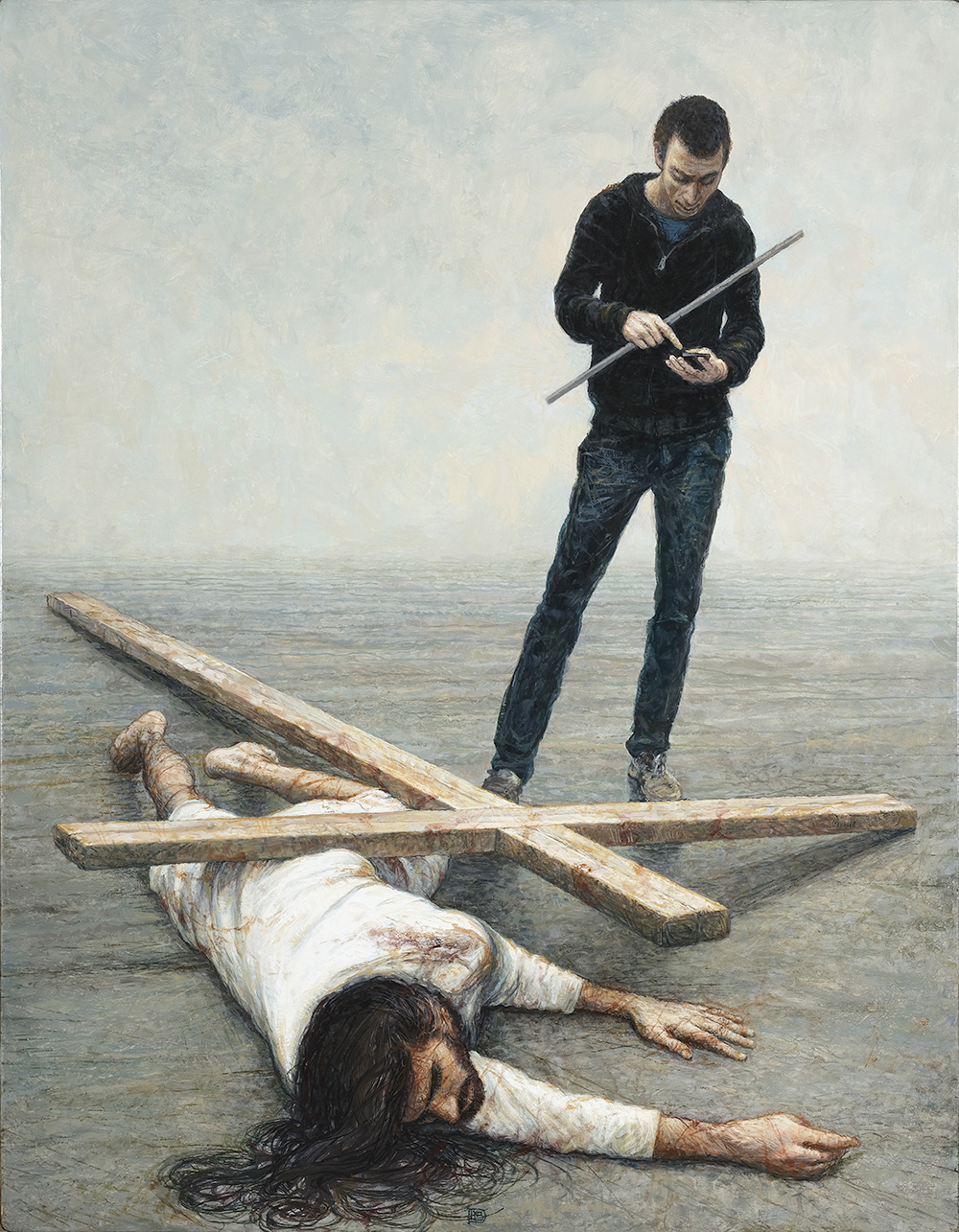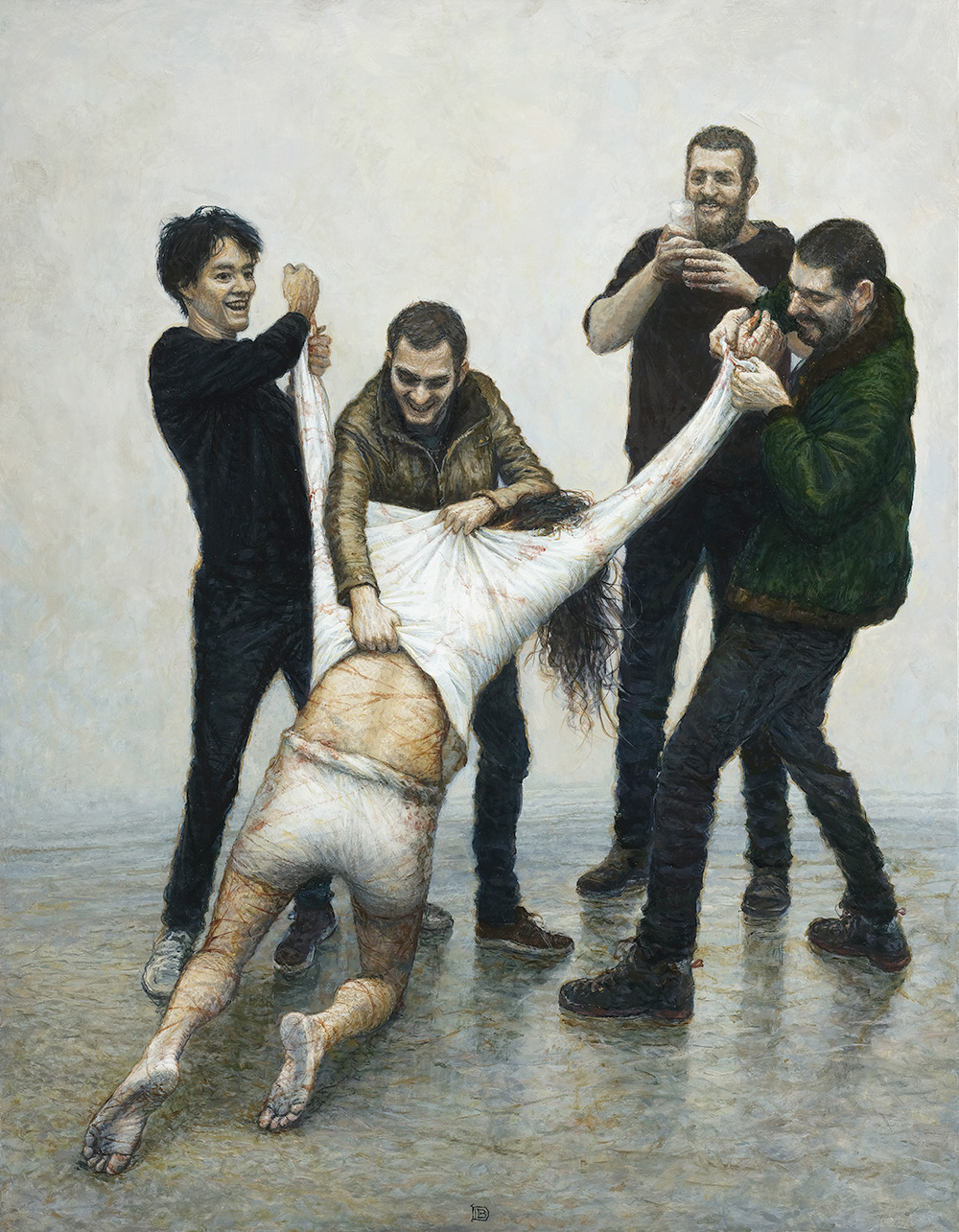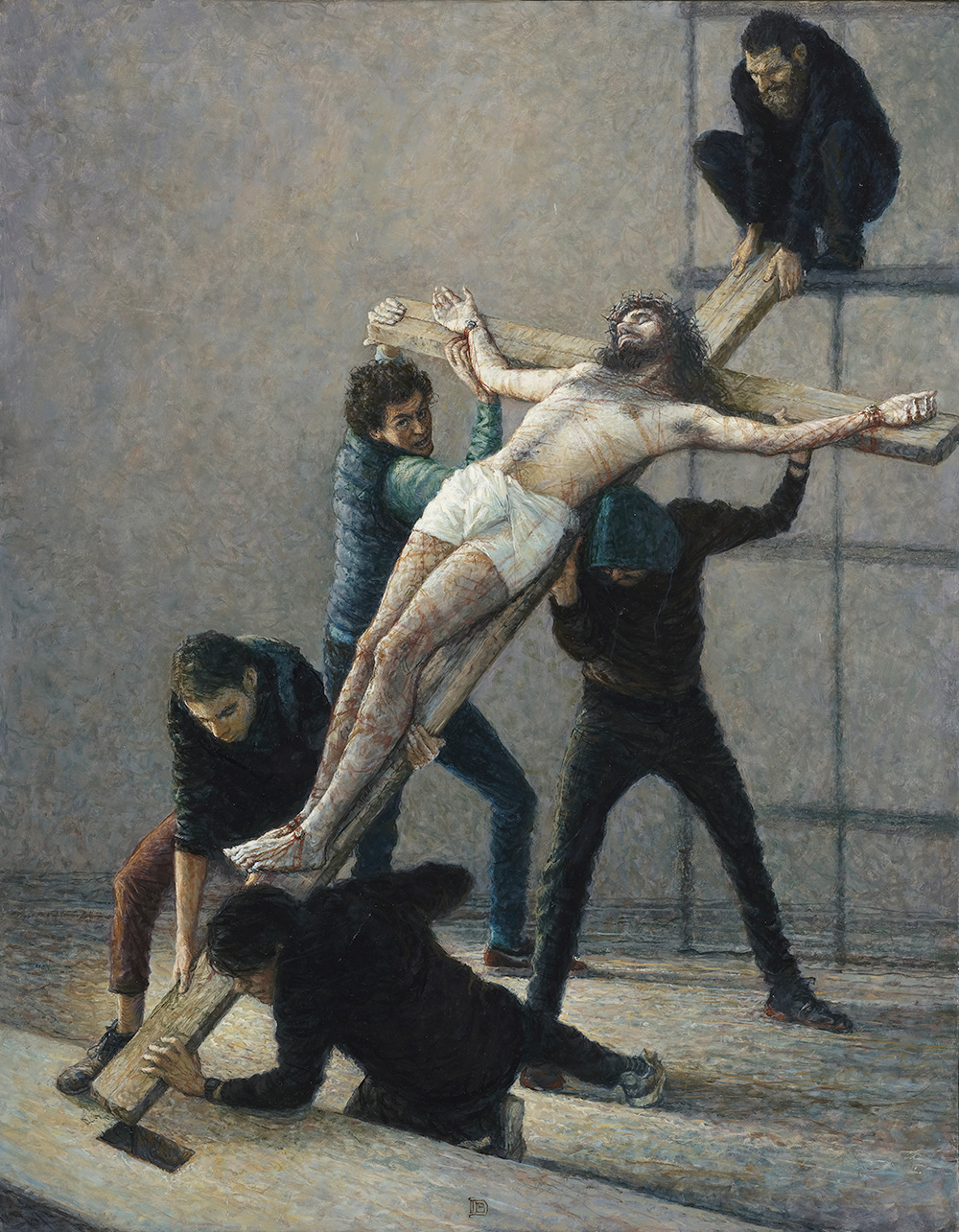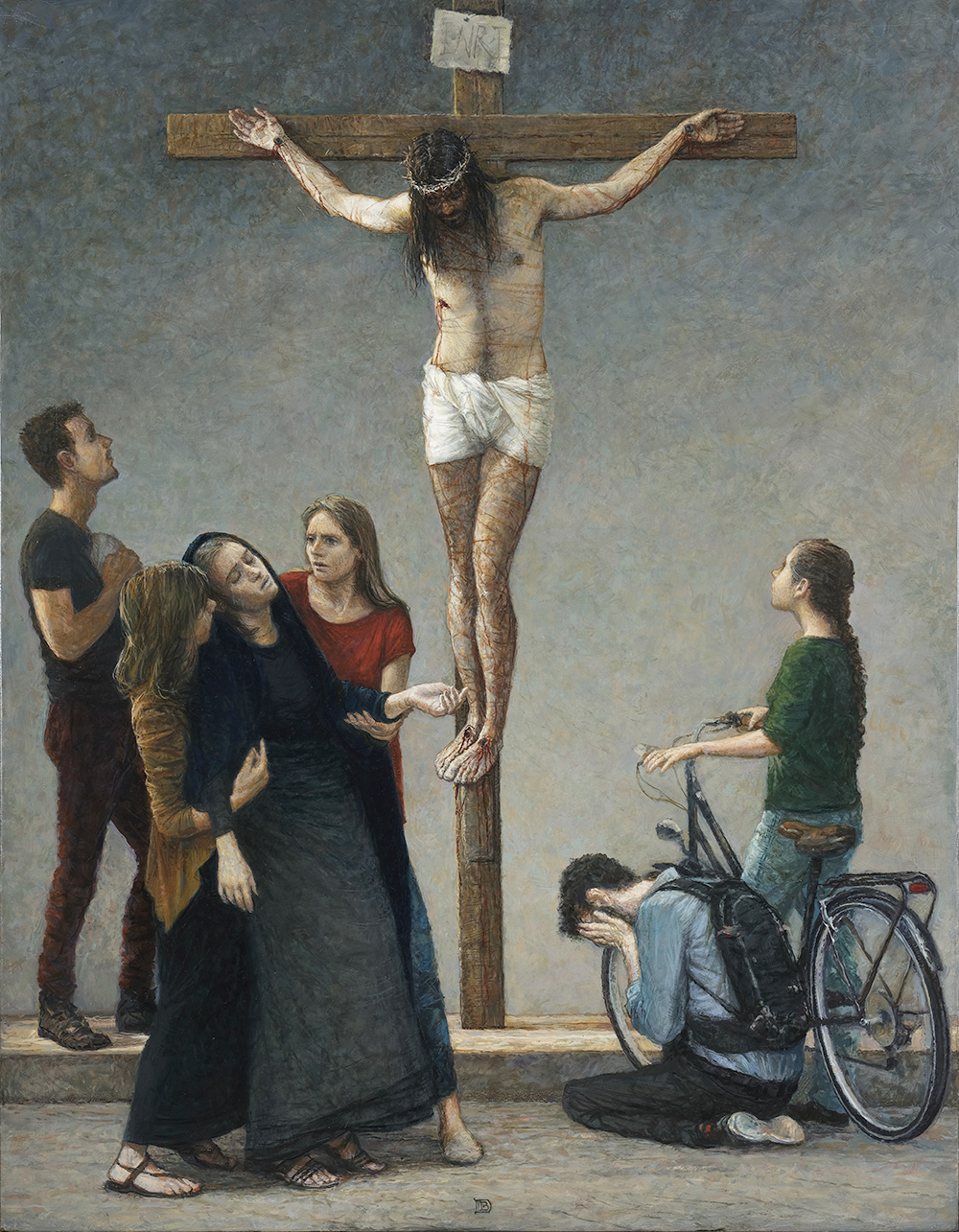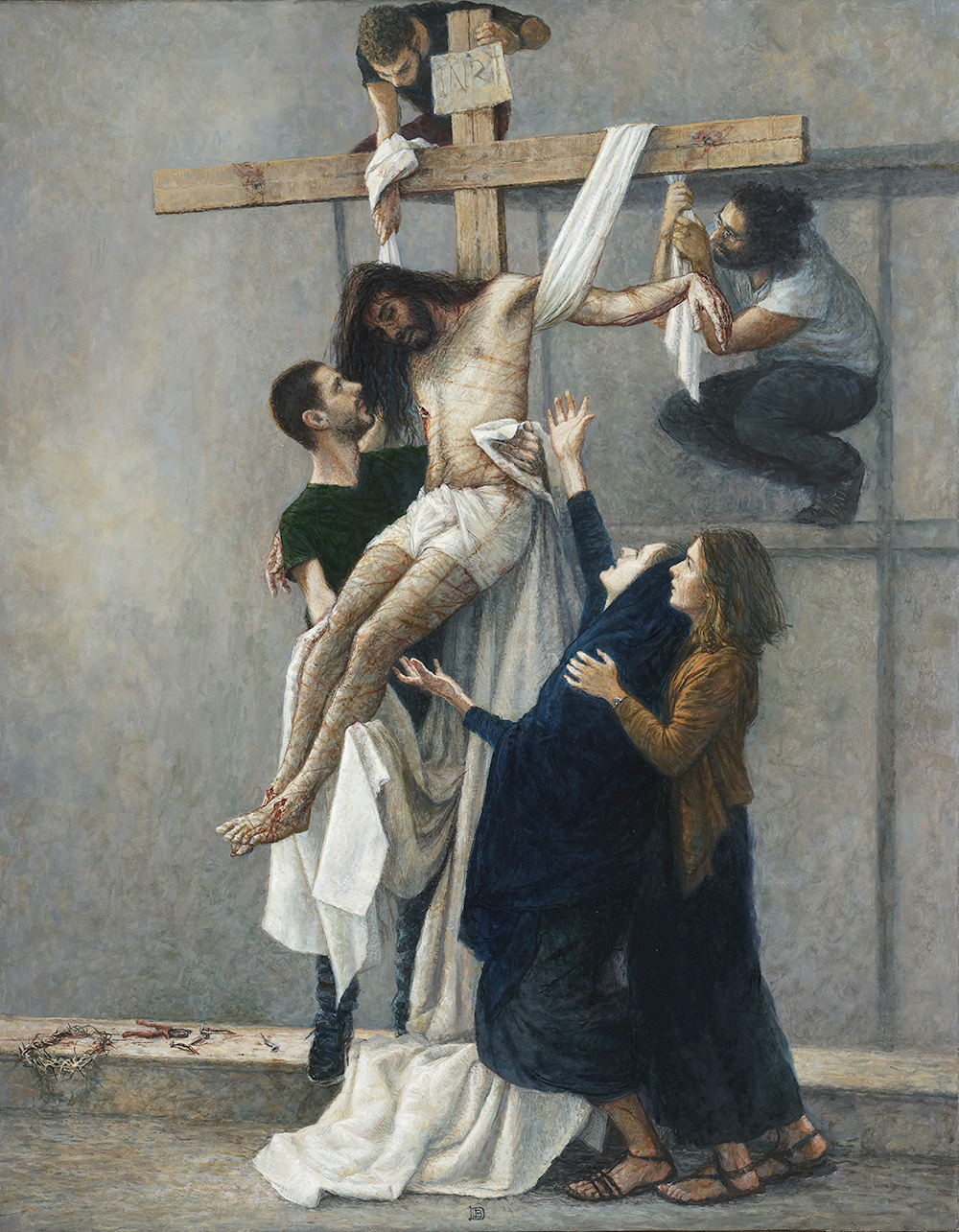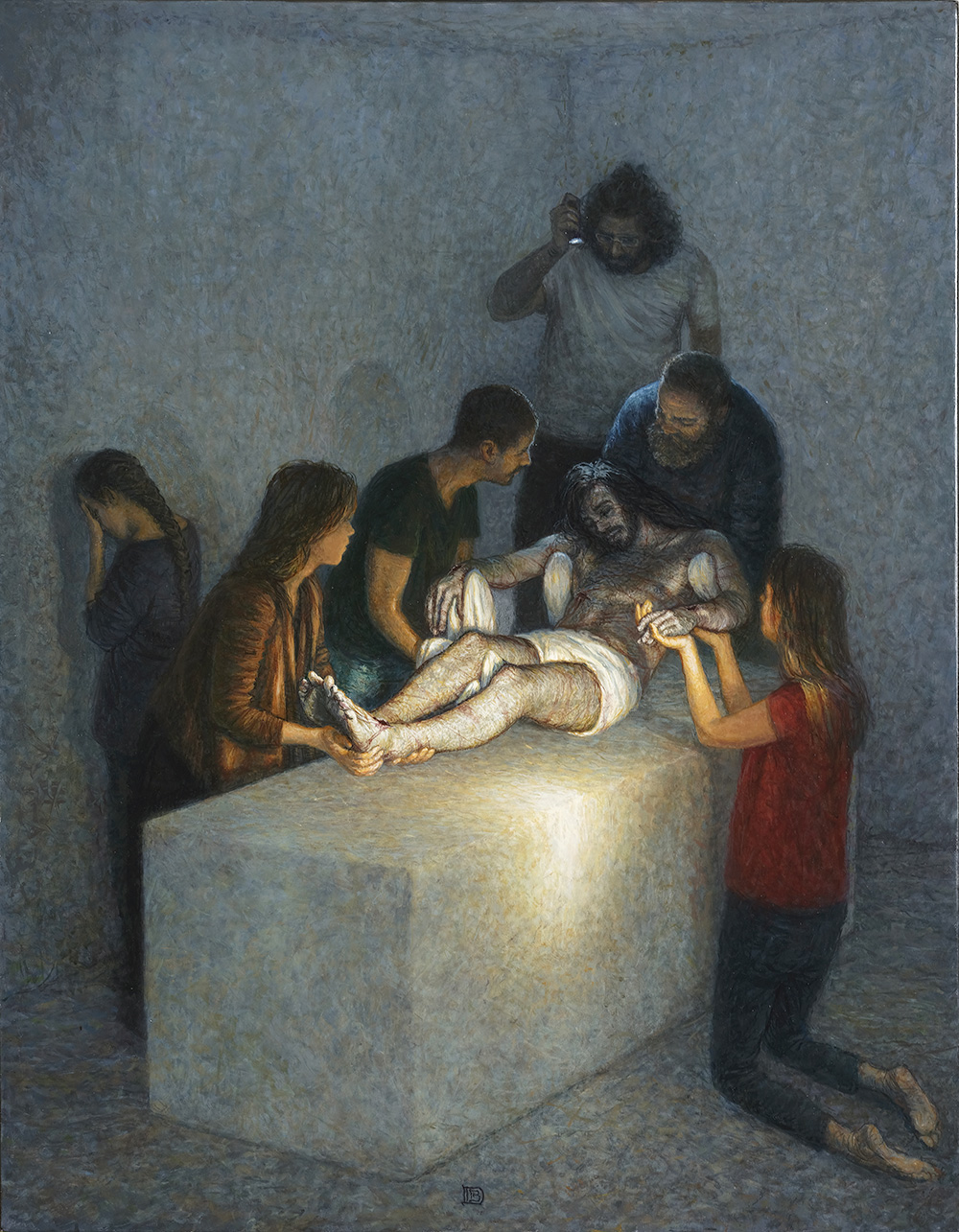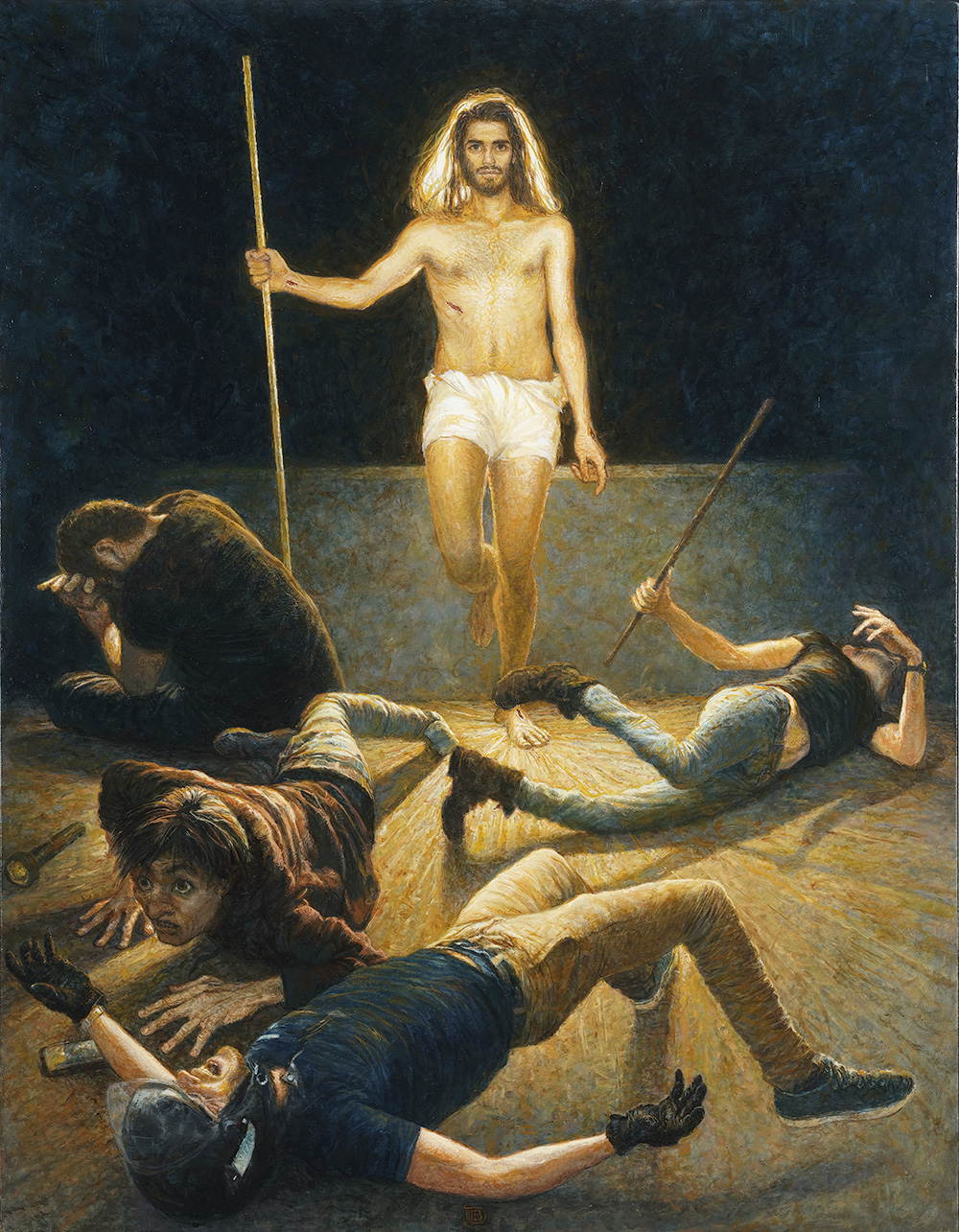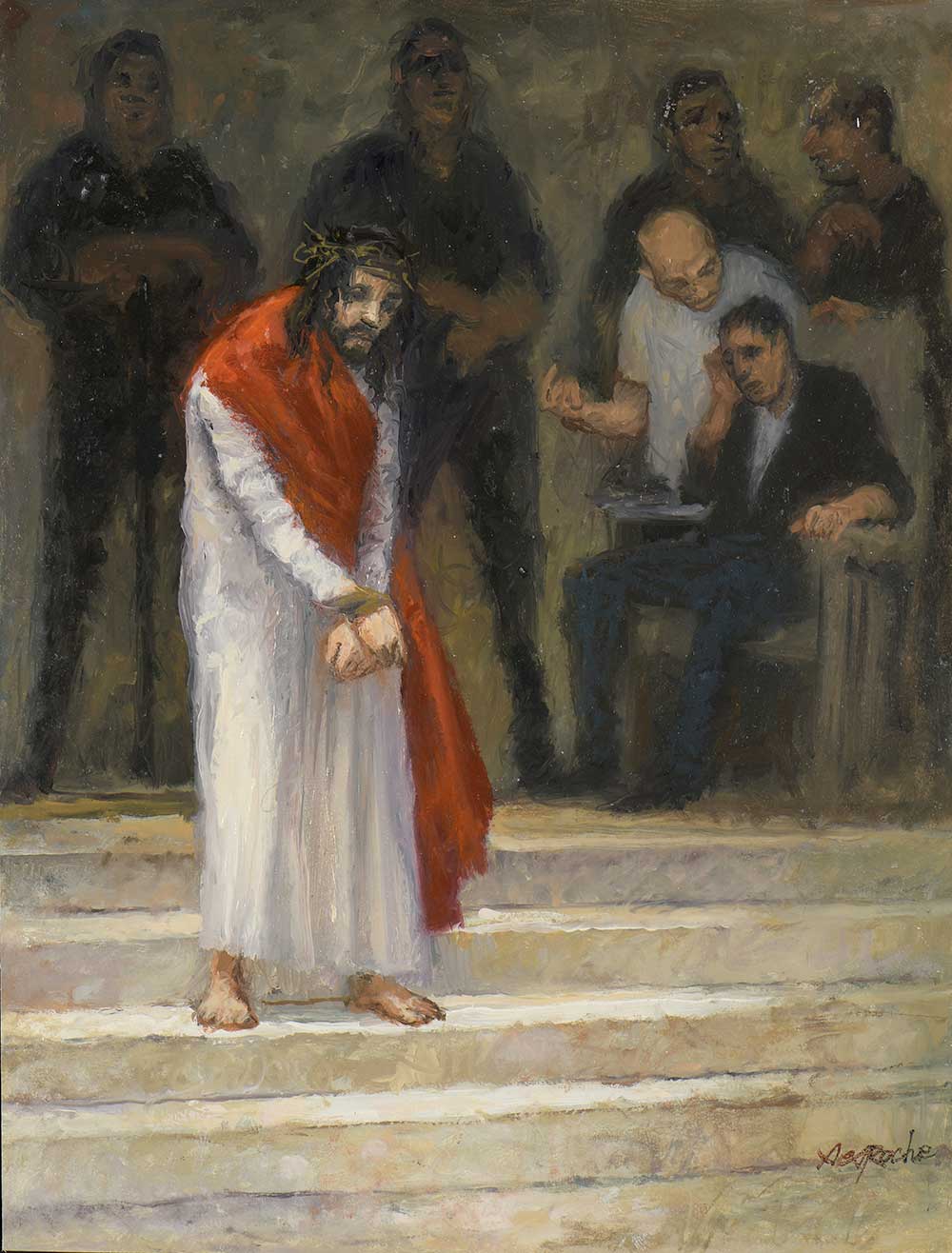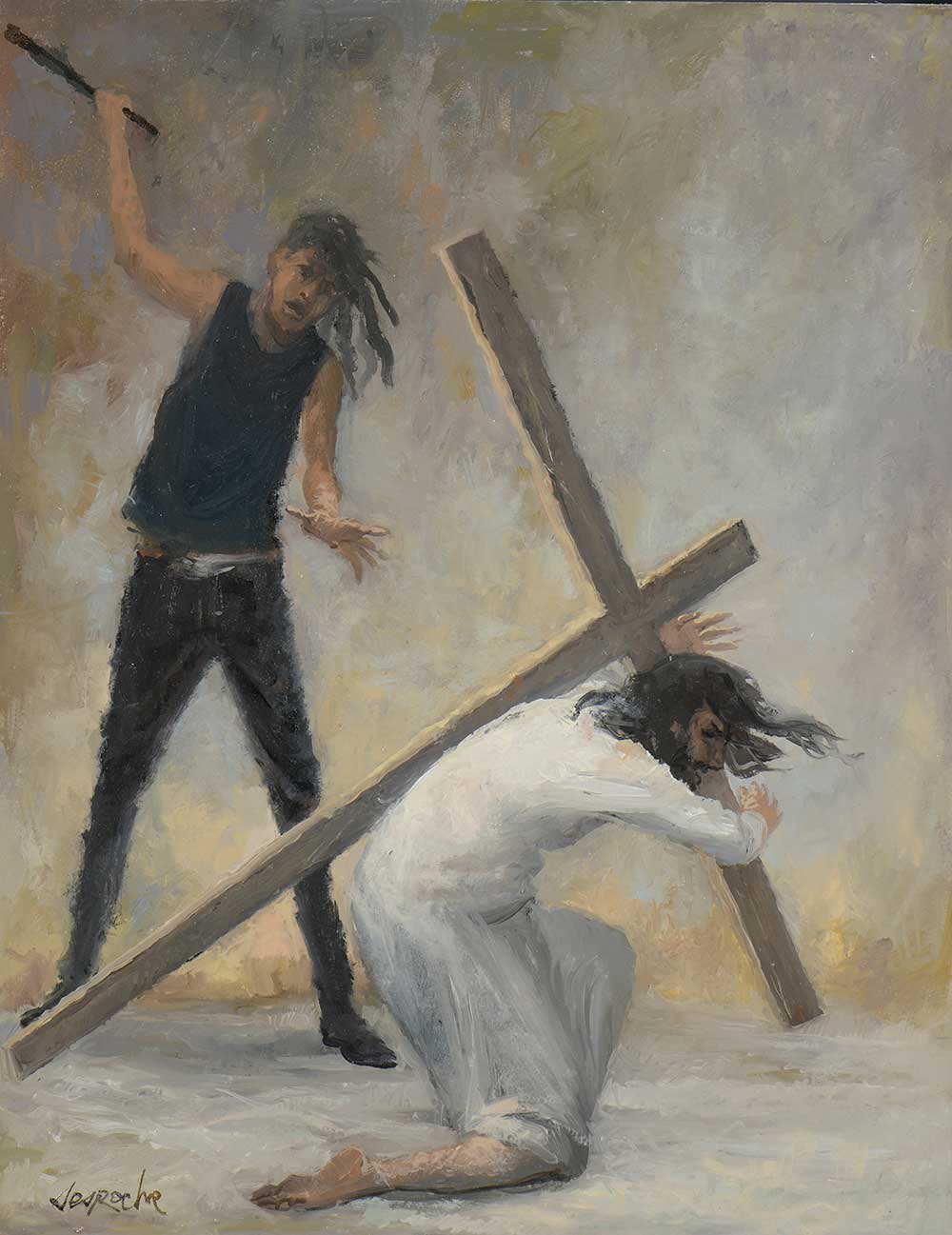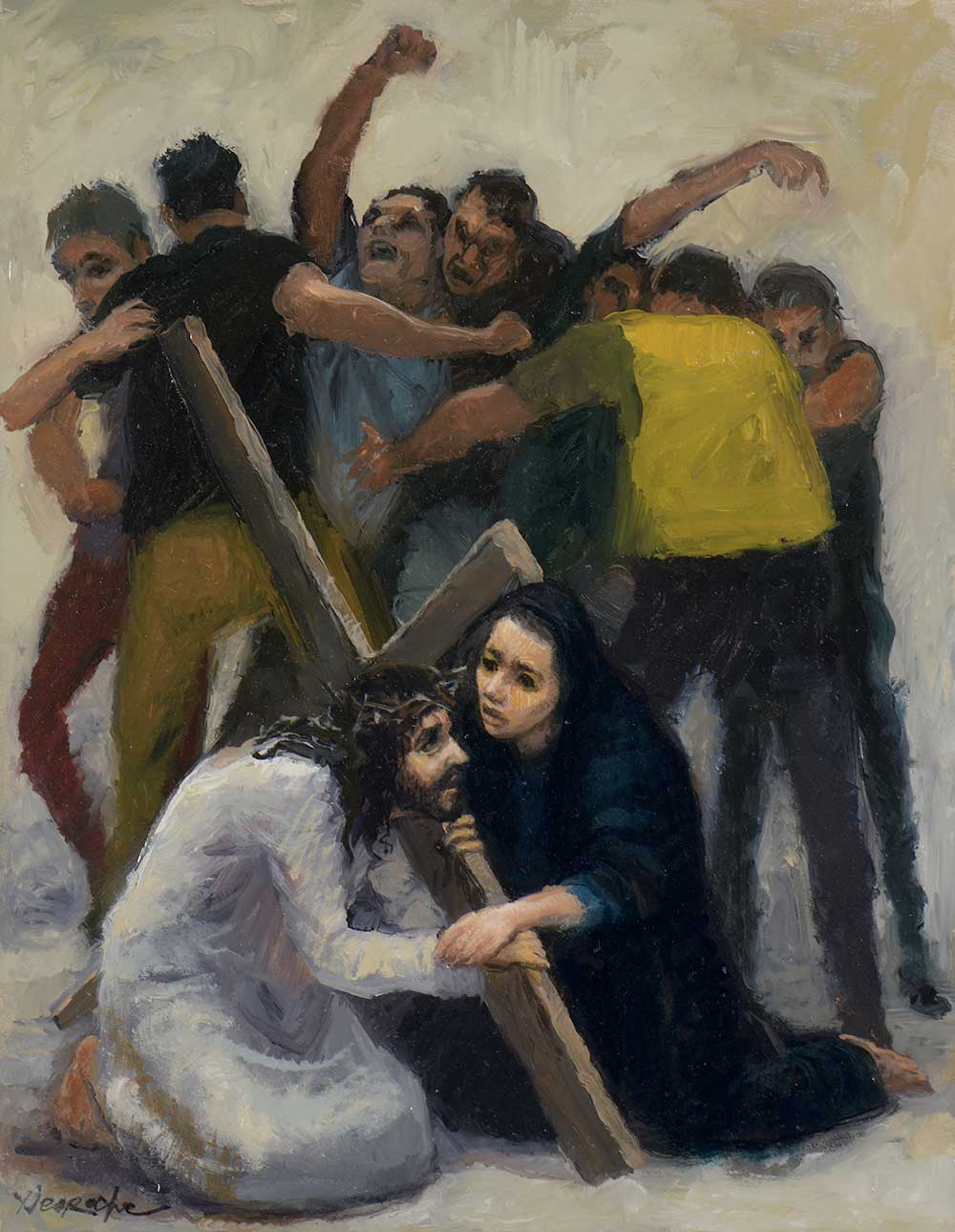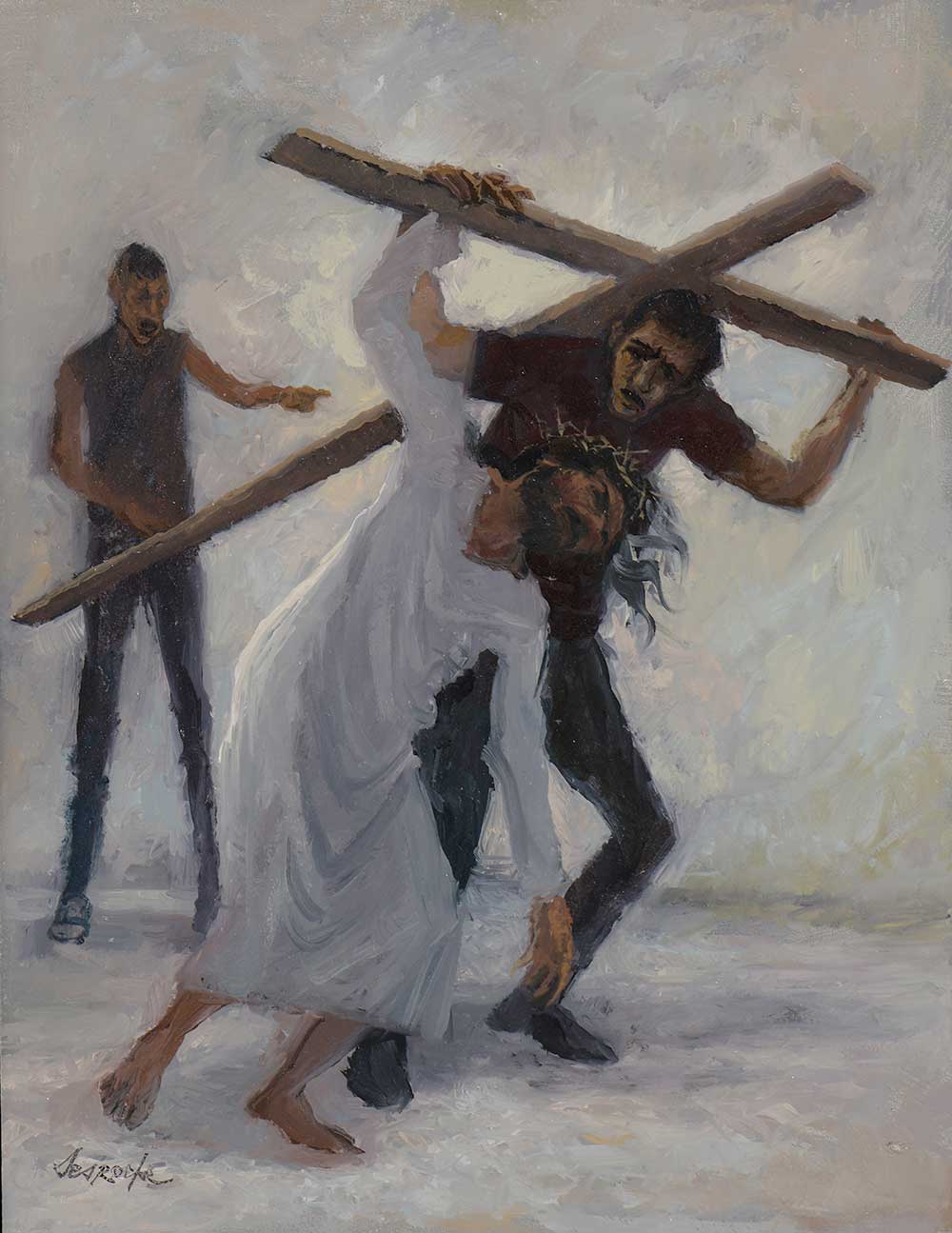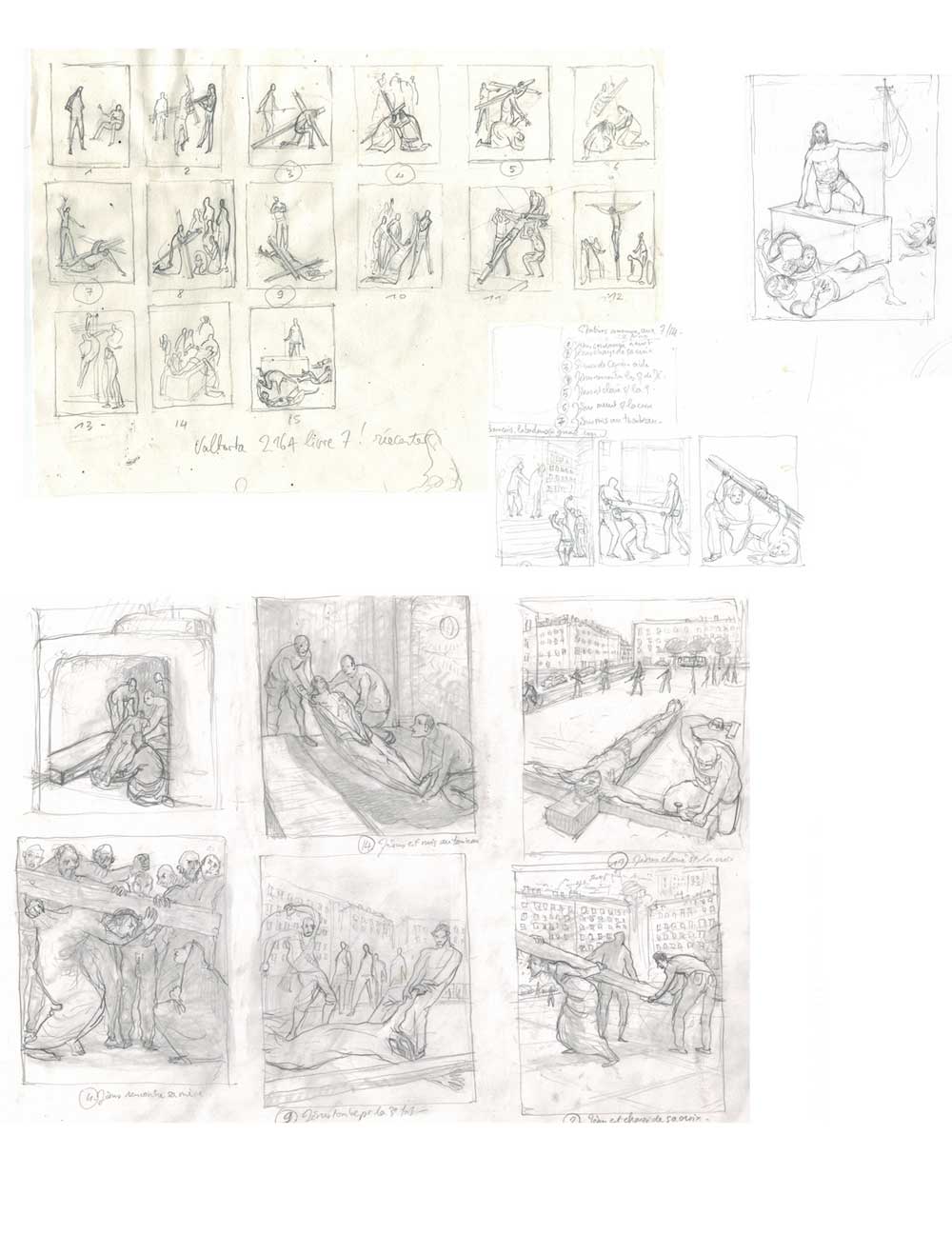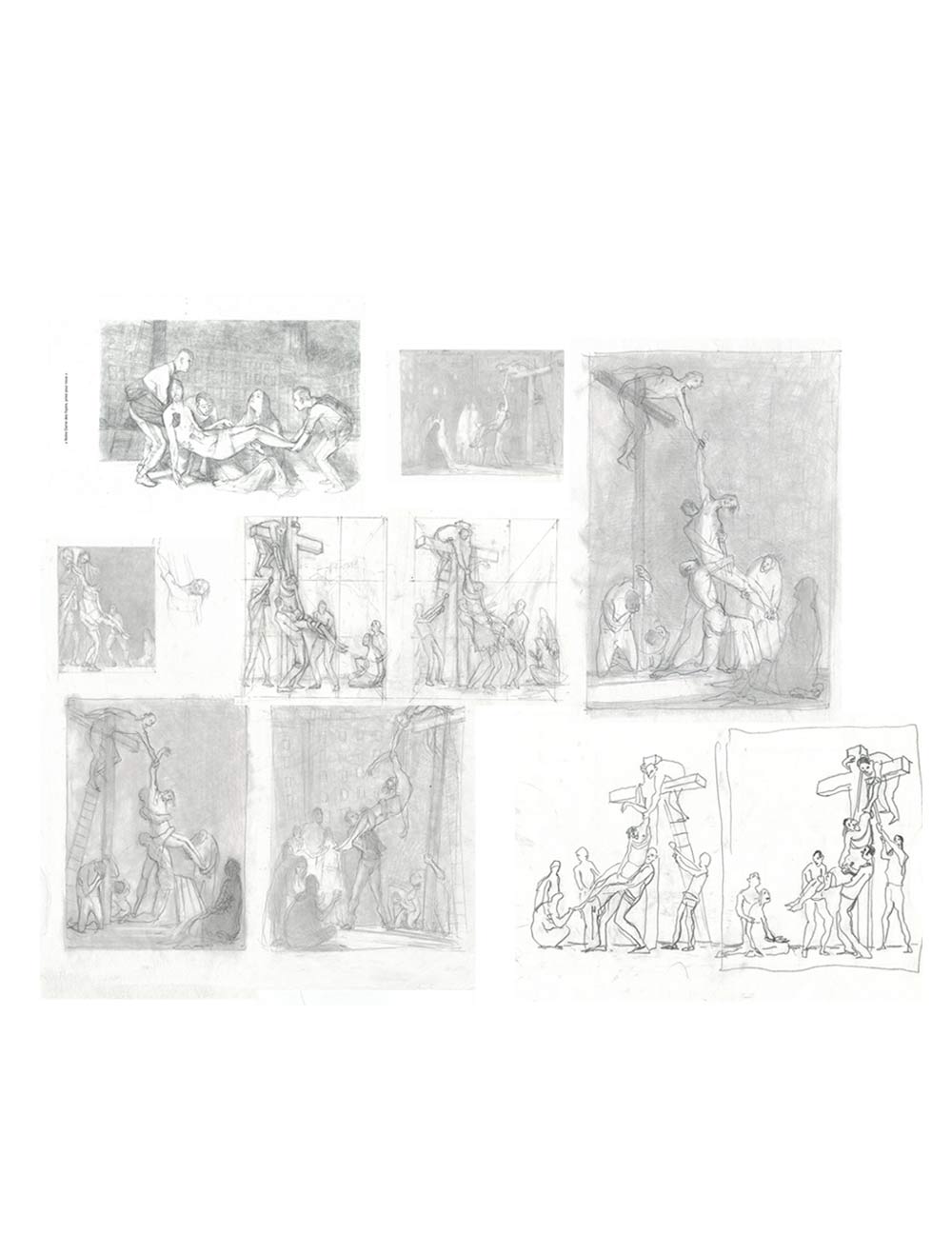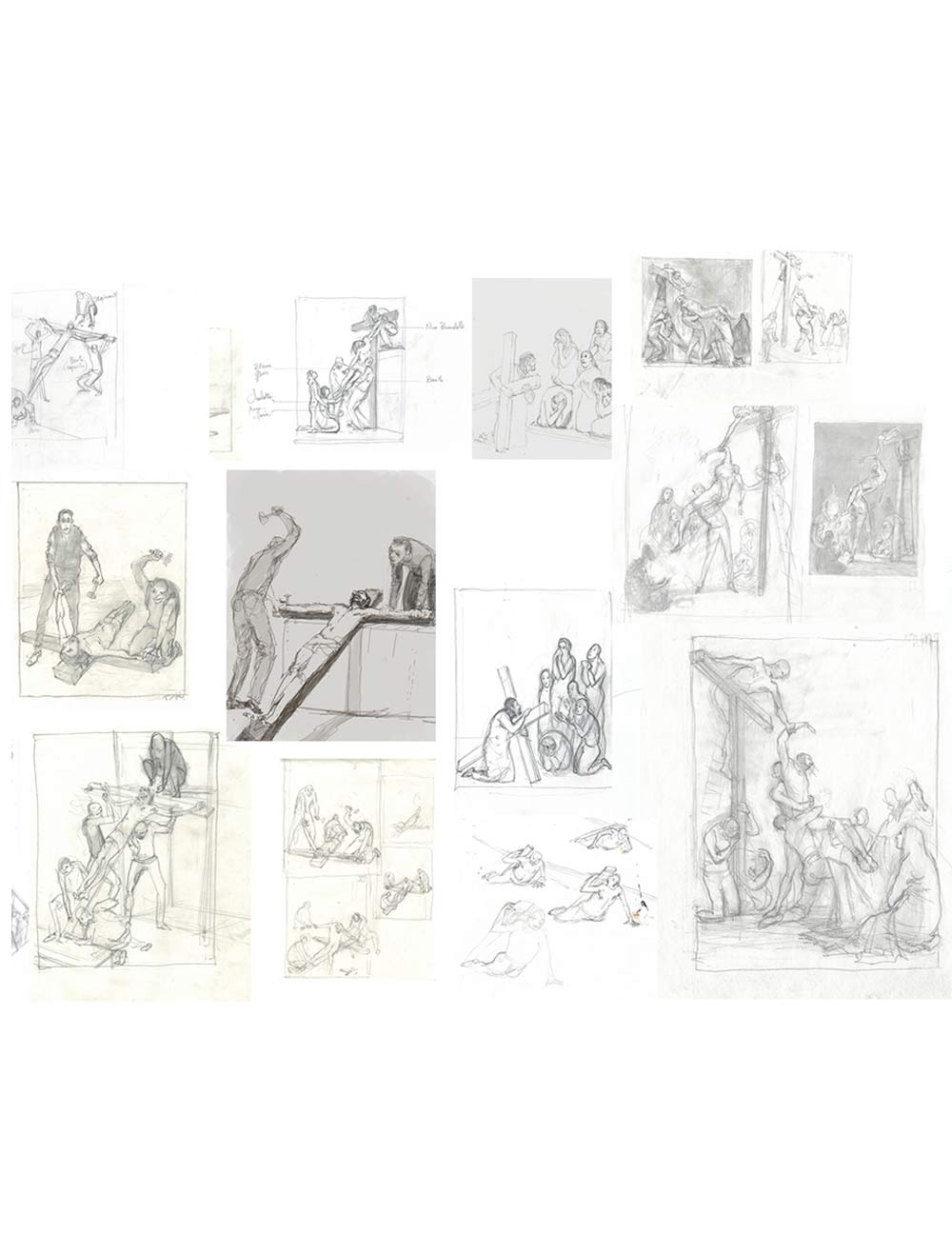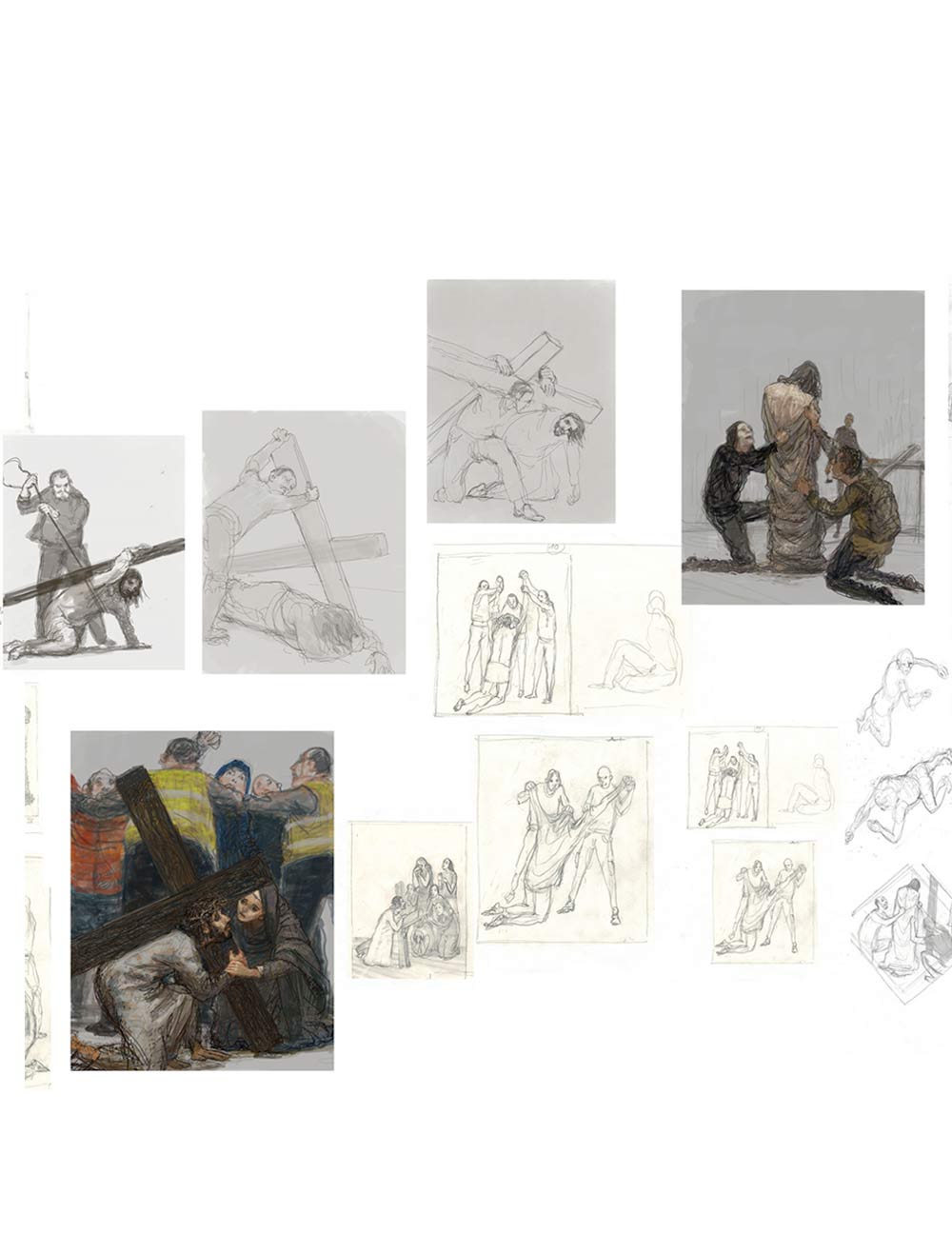THE WAY OF CROSS
Technical description:
15 very high quality plywood panels, prepared the old-fashioned way, with 7 layers of traditional coating (chalk and rabbit skin glue), and oil painting, with multiple glazing technique.
Great care has been taken to respect the rules of the old tradition, with long drying periods of time between successive layers.
Format : 50X65 cm (20×26”).
Dark and sober frame, mounting of the frame in American box, hanging on the corners of the external pillars of the side aisles of St Nizier church.
THE PASSION OF JESUS CHRIST, AS WE WOULD SEE IT, IN 2019.
Artist’s note of intent
1.1 I – GENESIS AND HISTORY OF THE PROJECT
A Parishioner for 10 years in St Nizier, it is in this church that my Japanese wife and our three children were baptized.
I have served there as an apprentice guide for about 5 years, and I have always dreamed to paint a Way of the Cross for this gothic jewel which did not have one. But the beauty of the building, the weight of centuries and the holiness of the martyrs of Lyon who are venerated there, intimidated me greatly.
Convincing myself that the heritage of a church – which I revere so much – was not an unchanging and fixed idea, I dared to make a spontaneous proposal to St Nizier ‘s curate Father Hugues Jeanson, in November 2016. I first showed him two paintings: an outraged Christ and a Pieta.
The proposal, was initially left pending. Then it was taken up by the parishioners themselves: a group of them, moved by this actualization of the Passion, obtained their approval from the priest through their obstinacy. The latter then took the head of a trio of parishioners in charge of the project, and in particular to collect the funds by means of crowdfunding in April 2019 (Credofounding), a campaign which was very warmly received.
The "Ordeal" would then also become somehow my ordeal: two and a half years of hard work, the spirit and the soul molded, plowed by this very serious subject. But, oh what happiness this project has brought me: the happiness you may felle when you deeply understand that you are accomplishing what you came for on this earth.
I had to draw dozens of sketches, then paint in oil for 4 months the whole cycle on a half-size canvas, enlist my former students, explaining them the whole story, prepare the living pictures by making a cross of 3m50 and 70 kgs ( 3,6 yards, 154 lb ) and crucify there —painlessly— a student called Elijah, a real lookalike of Christ. Then go through 3 days of poses and rehearsals, with each time about fifteen voluntary actors, overwhelming with generosity and accuracy and ‘justesse’.
I then prepared my 15 wooden panels, the traditional way, like icon painters, using 7 sanded layers of traditional plaster. I could finally begin painting the Stations!
One cannot escape unscathed from such an experience: after hundreds of days at the easel, made of meditation and listening to recordings of the Bible and masses of Bach, one becomes more aware of his condition as a sinner, and be into painting the Divine body for whole weeks long allows one to look at the consecrated host with a fresh eye.
A Painful and restorative work all together, with as companion in the workshop "the Passion-suffering" of the painted subject and the work standing in front of the easel 10 hours a day, and "the Passion-love" of painting.
I was able to contemplate the gift of Christ of his life to redeem our faults, and by painting this Cross, I sort of painted my faults. I felt, a little surprised, tears of repentance and grateful joy more than once in front of my painting!
Perhaps they were the same as Peter’s, as told in the gospel. After he just has been denying his Savior, Peter immediately understands through the way Jesus looks at him then, both the weight of his fault, and the immensity of forgiveness granted.
Far from any mystical rise, on the contrary, I paid particular attention to the soil in the pictures, that soil that was trampled by a man who is God, thus being able to tell and the earthly attraction, and the heaviness of an exhausted body, which made Jesus fall inexorably.
II – MY DEEP INTENTION: THE TOPICALITY OF THE GOSPEL
In the pictures, I deliberately staged some young people of today, namely my art school students, who, artists in the making, were born in a society of the image much more than of the writing. Indeed it is through the image medium I want to talk to them. In fact It is by the image that we will be able to bring these young people closer to the Holy Scripture.
I designed each painting to be immediately readable and understandable, rejecting any hidden meaning and showing the action explicitly. Reason why I claim the term “pictorial catechesis”. Indeed in so doing, I’m not inventing anything, rather I humbly follow the tradition of stained glasses, from St-Nizier for example!
Yes, voyeuristic images of the suffering of the Innocent taken on a mobile phone, 14 images of suffering, but a redemptive suffering, the final outcome of which is not death but Life.
I proposed Father Jeanson to add to the 14 traditional stations cycle, a glorious epilogue, "the Resurrection", in order to help the thousands of visitors and tourists of the St Nizier church that I have come across for years as a guide in this magnificent Gothic building, to find sense in this suffering.
In fact, lacking any biblical knowledge, many of them no longer know "the end the story"! with this glorious final, I wanted to help them out of the gratuitous and absurd suffering that spreads on the Internet, that suffering which insensitive passers-by and voyeurs capture on their phones, and indeed you can find in my paintings this type of perverse witnesses!
In "the Resurrection", borrowing a classic pictorial theme from art history, I painted the Tomb Guardians who symbolize the prevention of the Resurrection and Death, overcome by it, but the Light of Christ however, irradiates them, and softly lands on their bodies; so who knows if they will not be caught and seduced by her! …
There is absolutely no will from me to scandalize anybody, this intention to represent my contemporaries is on the contrary very conformist, even truly banal! It follows a pictorial tradition dating back for at least 4 centuries (from the 14th up to 18th century), where artists would paint people of their time alongside Christ and his mother.
The meaning is this: Jesus comes to visit us today, he bursts into our daily life and our world, and his Passion is current and daily. Indeed, Christians still die in 2019 for their faith in such lynchings, and the Holy Sacrifice also takes place every second on all the altars of the churches of the world!
When Jesus invites himself into our lives, he does not warn: Paul was heading towards Damascus to kill his disciples, Matthew counted the money intended for the roman occupant at his office, and St. Peter was fishing naked when he saw the Savior walking on water!
I didn’t want to stage soldiers or professional executioners, but people on the street, people like me; because picturing a Roman in armor would clear me of all complicity, by an immediate distancing!
That an executioner could have my face drives me to weigh my responsibility as a sinner, and to wonder which role I would have chosen between the one who whips, mocks and crucifies, or the believer who cries then gives due respect to the Savior’s damaged body…
I absolutely wanted to escape all Manichaeism, because are we not alternately one and the other?
Besides, in my project, the roles of the executioner and the mourner are even sometimes embodied by the same actor! I am thinking, for example, of one of them, Basile, who tears the garment of the Savior in a laugh, or raises the Cross under his blue hood. But after the Death, we find this penitent sinner – it could be me – gathering in his arms the body of Jesus at the descent from the cross, staring at His face whose lips were blued by death. He suddenly seems to understand everything. And it is this former torturer who in the end, with devotion and great recollection, will lean in the tomb the body of the Son of God, He who went to the end of the gift of Himself.
Only the act of painting allows me to put into images my true desire: to bring the bodies of these young actors, who for the most are far from the church, closer to the Body of Jesus, like a prayer that anticipates THE meeting that each of them and each of us will live when we arrive in the other world.
Bruno Desroche
RECONSTRUCTION OF LIVING PICTURES
PREPARATORY STUDIES
FOR THE WAY OF THE CROSS
WITH THE STUDENTS
FROM EMILE COHL SCHOOL

PREPARATORY OUTLINES
PASSAGE OF THE PAINTED SKETCHES TO THE FINAL TABLES
The interpenetration between the living pictures made with the actors and the painted images was an effect intently sought: indeed, some sketches were painted according to these living pictures (the crucifixion, the descent from the cross …), but it has also been the reverse way : the sketch painted according to the painter’s imagination would serve as a basis for the staging of the living picture, which itself in its turn would serve as a support for the final painting.
This permanent dialogue between the scenes played by real people and the painted images gives the latter the realism which makes the situation more credible, and further reinforces the invitation made to the viewers to project themselves into the image.
DRAFT
I had to draw dozens of sketches, then paint in oil for 4 months the whole cycle on a half-size, enlist my former students by explaining the story, prepare living pictures by making a cross of 3m50 and 70 kgs and crucify there painlessly a student called Elijah and the lookalike of Christ, go through 3 days of poses with each time about fifteen volunteers actors, upsetting with generosity and accuracy … I then prepared my 15 old wooden panels like icon painters used to do, using 7 sanded layers of traditional plaster. I could then only finally start beginning to paint the Stations!
